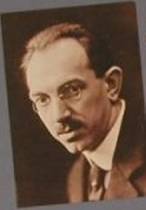
Bruno Seidler-Winkler (b. 1880, Berlin, Germany; d. 1960)
1903-1923: Artistic director for the Deutsche Grammophon record company
1923-1925: Conducted in Chicago
1925-1933: Conductor, Berlin Radio Orchestra
1934-?: Taught at the Berlin High School for Music
Bruno Seidler-Winkler studied music with Jedliczka as a child, sang in the Berlin cathedral choir, and as a pianist was acclaimed as a child prodigy. Between 1903 and 1923 he was the artistic director for Deutsche Grammophon, leaving to take up a position in Chicago, where he remained for two years. Between 1925 and 1933 he was conductor of the Berlin Radio Orchestra; his successor in this post was Eugen Jochum. He taught at the Berlin High School for Music from 1934, and continued to record, making for instance the first recording of Lili Marlen with Lale Anderson in 1939. Seidler-Winkler, alongside Landon Ronald and Carlo Sabajno, was one of the very first house conductors for the gramophone. His recorded output was extensive. In addition to numerous accompaniments, it included the first recording of Bizet's Carmen, made in 1908 with Emmy Destinn in the title role, and a complete recording of Beethoven's Symphony No. 9, recorded in 1923 as a farewell to Deutsche Grammophon. Later recordings included for HMV excerpts from Act II of Wagner's Die Walküre, which has been released with excerpts conducted by Bruno Walter in Vienna to form the complete Act, and two works to celebrate the 1936 Olympics held in Berlin, Werner Egk's Olympische Jugend and Richard Strauss's Olympic Hymn. Like his slightly younger contemporary, Piero Coppola, he lived well into the post-war period.
Ludwig van Beethoven
Symphony no 9 in D minor, Op. 125 "Choral"
Eleanor Schlosshauer, alto
Ethel Hansa, soprano
Eugen Transky, tenor
Albert Fischer, bass
Berlin State Opera Chorus
New Symphony Orchestra, Berlin
Bruno Seidler-Winkler
Rec.: December, 1923
| 
